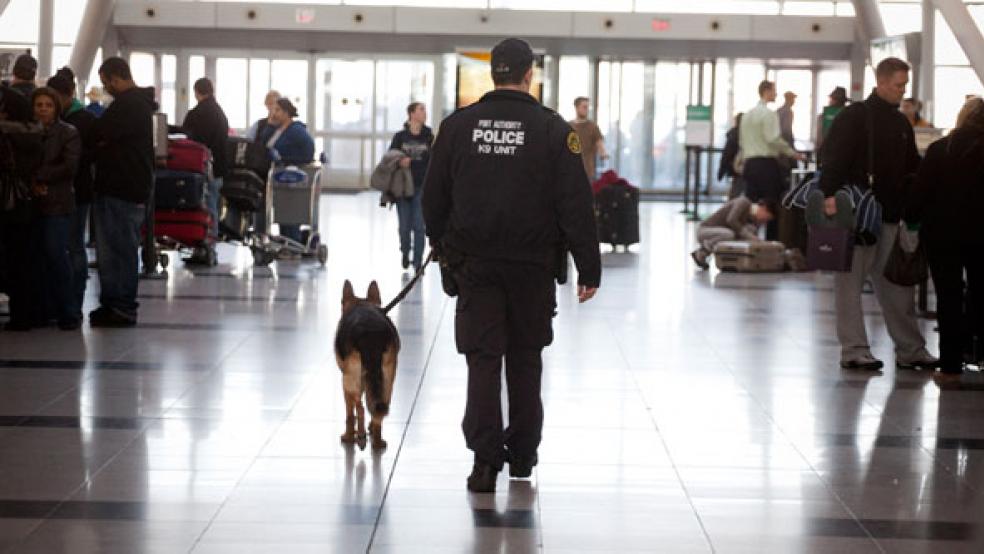For years, a government watchdog has been highly skeptical of the federal Transportation Security Administration’s use of “behavior detection officers” to try to ferret out potential terrorists among passengers at airports by looking for dozens of different tell-tale indicators.
TSA initially balked at the criticism of the Government Accountability Office (GAO) noting that dozens of other countries including the United Kingdom and Israel routinely use similar methods as security and safety measures. But over the years the security agency gradually scaled back the number of its behavior detection officers, mostly as a cost-saving measure.
Related: Privatizing Air Traffic Control: Not Ready for Takeoff
In all, about 2,660 behavior detection officers currently prowl scores of U.S. airports, engaging passengers in conversation at screening checkpoints looking for signs of stress, fear, deception or belligerence. TSA believes that even the way an individual swallows and the degree to which a person’s eyes are open could signal a terrorist’s intentions.
But a new GAO report released Thursday found that TSA doesn’t have valid evidence that most of the 36 behavioral indicators currently employed can be effectively used to identify individuals who may pose a threat to aviation security.
Indeed, GAO investigators concluded that of the 178 academic and research sources and publications TSA cited in support of its most recently revised list, 98 percent or 175 of the sources “do not provide valid evidence applicable to the specific indicators” that TSA utilizes in observing and vetting passengers.
According to a breakdown, 75 percent of the sources cited by TSA were news articles, opinion pieces, presentations by law enforcement and industry groups, and even screen shots from online medical websites that fail to meet GAO’s definition of valid evidence.
Related: 13 Shocking Items Confiscated at the Airport
Twelve percent of the sources were journal articles, book reviews and other publications that reference – but don’t provide – original analysis. Just 11 percent of the sources cited by TSA were research sources reporting original data.
“In total, GAO found that 3 of the 178 total sources cited could be used as valid evidence to support 8 of the 36 behavioral indicators in TSA's revised list,” the report states. “More specifically, TSA has one source of valid evidence to support each of 7 indicators, 2 sources of valid evidence to support 1 indicator, and does not have valid evidence to support 28 behavioral indicators.”
The GAO and TSA have been wrangling over these surveillance practices dating back to 2013 when the watchdog agency recommended that TSA limit future funding for its behavior detection activities. TSA contracted with the American Institutes for Research (AIR)—a behavioral research and evaluation organization—to advise it on ways to refine its list of behavior indicators in late 2013 and early 2014.
Eventually, TSA scaled back the number of full-time-equivalent behavior detection officers it employed from 3,131 in fiscal 2013 to 2,660 in 2016 – a reduction that resulted in annual operating savings of $35.4 million.
Related: Drones Pose Fresh Threat to Commercial Flight Safety
A report from the American Civil Liberties Union in February charged that the behavior detection methods used by TSA were unreliable and raised questions about racial and religious bias.
The 28-page report stemmed from a June 2015 lawsuit under the Freedom of Information Act that forced the release of more than 12,000 pages of documents about the program, according to USA Today.
TSA officials have roundly defended the program as an important layer of aviation security and an anti-terrorism safeguard.
James O. Gregory, deputy assistant administrator for communications, said in a statement: “While we respect the opinions of our GAO colleagues, TSA remains steadfast in the effectiveness of behavior detection and committed to training our officers in these widely used techniques. TSA’s behavior detection capabilities are an important piece of our layered approach to deter, detect and identify adversaries looking to defeat security measures and attack our nation’s aviation system.”





